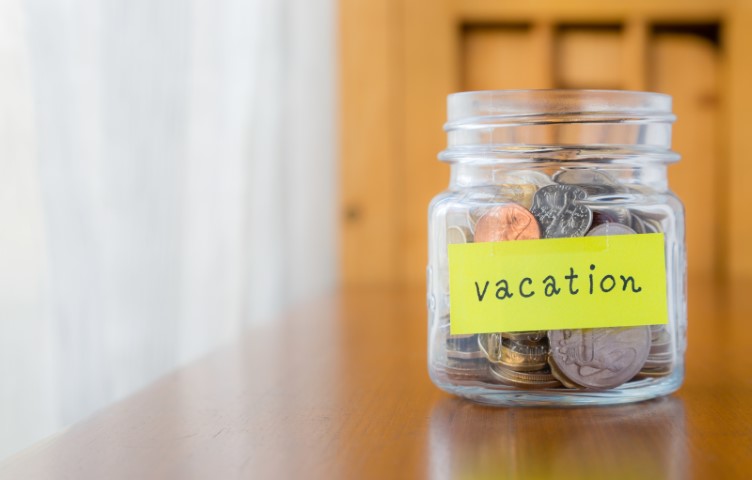Last Updated on June 9, 2021
Contents
- 1 Is It Really Possible To Live On One Paycheck Per Month?
- 2 How To Live on One Paycheck Per Month
- 2.1 Making One Paycheck Per Month Work
- 2.2 Can a Family Live on One Paycheck Per Month
- 2.3 Can you Live on One Paycheck Per Month If You Are In Debt
- 3 Sources
Is It Really Possible To Live On One Paycheck Per Month?
Almost 87% of American families are in debt. The average American household carries $137,063 of debt, with the majority of it being mortgage debt. With the average median household income at $59,000 in 2020, it suggests that many Americans are living beyond their means.
Debt is not limited to younger people just beginning. Unfortunately, people are carrying debt into their retirement years. Many Americans view their debt as a necessity, but others view it as a burden.
If you have decided it’s time to take your finances in hand and plan for the future, here are some tips to make that possible.

How To Live on One Paycheck Per Month
Living on one paycheck is an excellent way to ease into retirement or plan for the future. It helps prepare us for a lower household income in uncertain economic conditions. How can this be accomplished? It is easier said than done for most.
Making One Paycheck Per Month Work
Here are some steps to take as you begin transitioning into a more financially conservative lifestyle.
Plan Ahead
A healthy emergency fund will help reduce anxiety about living on one income. It helps protect you from unforeseen expenses such as car or home repairs or medical costs. Ideally, you need enough money for six to nine months of living expenses before you begin to live on a single income.
To begin with, while both of you are still working, set up direct deposit to allocate a portion of both paychecks into your savings account and the rest to your checking account. This will help you reach your savings goal faster and is an excellent first step toward learning how to control your spending to enable you to survive on less money.
You may also need to make some difficult decisions about what you can cut from your living expenses to help you prepare for this change.
Tax Withholding
Check your income tax withholding to see if it can be adjusted. Perhaps you can increase allowances, which means you’ll have less withheld from your paycheck each month, giving you more net pay. If you aren’t sure if your withholding needs to be adjusted, consult with the IRS directly or a tax professional. Make sure you adjust the budget accordingly if the withholding changes impact income.

Tips to Save Money
The tricky thing about saving money is starting to save.
The first step to begin saving is to determine what you spend. Keep track of all expenses—that means every household expense, coffee, or cash tip.
Once you have your data, organize the amounts into categories—for example, mortgage, groceries, gas, etc., and total each amount. Use bank and credit card statements to ensure nothing is forgotten.
If your expenses are so high, you’re unable to save as much as you’d like, it is time to reduce spending. What nonessentials can you spend less on? Things such as dining out, subscriptions, and entertainment would fit into this category. Look for ways to save on fixed monthly expenses like cable television and cell phone.
Here are some tips for reducing everyday expenses.
- Use community event listings to find low-cost or free events to reduce entertainment spending.
- Cancel memberships or subscriptions you don’t use or need.
- Only dine out once a month and choose economical places only.
- If tempted by a nonessential purchase, put it on hold for a few days. You may have a change of heart and decide you do not need the item.
- Almost every bank offers automated transfers between checking and savings accounts. Divide your direct deposit, with a part of every paycheck going directly into a savings account.

Saving for a short-term goal – consider an FDIC-insured deposit accounts:
- A savings account, or
- CDs or certificate of deposit locks in money for a fixed period at a rate that is usually more than a saving account
For longer-term goals consider these ideas:
- FDIC-insured (IRAs) or individual retirement accounts, that are tax-efficient savings accounts.
- Securities like mutual funds or stocks. These investment products can be obtained through a broker-dealer.
- Remember that the FDIC does not insure securities, as they are not deposits or an obligation of the bank and not guaranteed by them. Remember, they are subject to investment risk, including possible loss of your principal.
You don’t have to choose one account. Carefully review your options and consider balance minimums, fees, and interest rates to determine the mix to help you best achieve your savings goals.

Strategies To Cut Spending
Once you’ve figured out how much you’ll save and what you have to work with each month, you will have a better idea of what spending cuts need to be made. Develop a list of all your monthly expenses, note everything you could do without, and begin cutting.
Depending on your situation, this could mean canceling gym memberships and cable or selling a second car or moving into more cost-effective housing. These processes can take time, so don’t wait to begin.
As the family won’t have as much money moving forward, there will be more time to devote to activities such as home improvements, fun with your kids, or a new hobby. If you’ve hired help with the housekeeping, babysitting, or lawn care, or you’ve relied on takeout meals because there was no time to cook, that will no longer be necessary.
Here are some suggestions to reduce your spending.
- Keep track of all expenses
- Eliminate takeaway coffee
- Walk or cycle to work
- Try thrift store shopping
- Buy unbranded products in the grocery store
- Take your lunch to work
- Prepare meals ahead of time for the week to enable better planning
- Watch your gas and electricity usage
- Cut out expensive drinks or go alcohol-free
- Have a garage sale
- Frequent garage sales when in need
- Avoid bank overdrafts
- Carpool
- Re-evaluate insurance needs
- Get a less expensive cell phone or internet plan
- Do not take out payday loans
- Buy a dry-cleaning kit
- Become handy, make gifts rather than buy them
- Eliminate expensive cleaning supplies and make your own
- Simply beauty regime
- Cancel gym membership
- Change light bulbs to energy-saving bulbs
- Use cash only when making purchases
- Clip coupons and watch for deals
- Good dental hygiene will help avoid dental bills
- Take care of your general health to avoid medical bills
- Become grateful for what you have, and don’t compare yourself to others

Manage your Monthly Income
Some couples decide whoever has more time should handle the budget, while others prefer to have both involved. Review your bank accounts as part of the process. Some couples maintain a joint checking account, while others think it’s better to keep track of the money using two linked checking accounts for easy transfers. It’s wise to continue saving a portion of the family income. Use direct deposit or automatic transfers from a checking account into a savings account to make it easier.
Review your budget and keep track of progress every month. Not only will this help you stick to your personal savings plan, but it also helps you identify and fix problems quickly. Understanding how to save money may inspire you to find more ways to save and achieve your goals faster.
Pay Down Debt
High-interest credit card debt, car, or student loans can be budget breakers—and often makes existing on one income impractical. Consider pushing your timeline back if it means you will have less debt moving into the future. Determine the amount of time it would take to reduce debt while still a two-income household.
Budgeting
Figuring out a new monthly budget will help you make necessary adjustments prior to downsizing to one paycheck. Consider how much you’ll save by cutting down on work-related expenses such as dry cleaning, commuting, and lunches. Beyond your daily needs, it’s essential to factor in your saving plan into the budget. If married, the employed spouse will continue to contribute to their employer-sponsored savings plan, and the unemployed spouse could be entitled to an individual, tax-advantaged spousal IRA.

Social Life
Just because you are attempting to trim down your spending doesn’t mean you need to become unsociable. There are ways to stay in touch with people and not break your budget.
- Technology has made it possible to visit with friends over the internet
- Invite friends to your home for popcorn and a movie
- Organize a picnic at a local park
- Find events that are free around your neighborhood
- Don’t abandon dining out completely. Meet friends at an economical restaurant no more than once a month
- Volunteer around your community. Nursing homes, animal shelters, and other organizations are always looking for people to help
Can a Family Live on One Paycheck Per Month
Whether a family can live on one income is related to income and lifestyle costs. A childless couple with no debt will find it easy to have one income. But parents need to adjust their budget to live on a single income.
Using some of the tips above will make it easier for a family to manage with one income.

Can you Live on One Paycheck Per Month If You Are In Debt
The easiest way to manage this scenario is to get out of debt. Work with a credit counselor or do it yourself, but there are some options for relief from debt.
Apply For a Debt Consolidation Loan
If you can qualify, debt consolidation allows you to convert multiple debts, usually credit card balances, into a single loan. Repayment is simpler as the monthly payment will no doubt be less than payment on each separate bill. It helps to budget as the fixed payment toward the loan each month frees up extra money. A debt consolidation loan works for those with good or excellent credit scores who can qualify for the lowest available interest rates.
Use a Balance Transfer Credit Card
Another possibility for those with good credit is to apply for a credit card offering an introductory 0% APR on transferred balances for a time, known as a balance transfer card. You need to devise a plan to eliminate the debt prior to the end of the zero-interest period and the higher rate begins. If you can do this, you’ll potentially save a substantial amount in interest.
A warning: Balance transfer cards often charge a balance transfer fee, typically about 3% to 5% of the transferred amount. This adds to the debt load but will come out ahead with the savings on interest if you make payments on time.
Consider Opting for the Snowball or Avalanche Methods.
If your credit score makes it impossible for you to choose one of the above methods, take charge on yourself and begin reducing multiple credit card balances. There are two specific strategies for accomplishing this.
- Debt Snowball Method
- Use any extra money to pay more than the minimum monthly payment required on one debt until it is paid off. Use the monthly payment from that debt to pay the next debt.
- Using this method, the smallest balances will be paid off first.
- You won’t save interest, but you’ll be debt-free faster.
- Debt Avalanche Method
- With this method, you will pay off the balances that carry the highest interest rates first.
Participate In a Debt Management Plan
Nonprofit credit counselors provide these plans. A counselor will negotiate with your creditors on your behalf to lower your interest rates or fees and possibly the monthly payment.
You make one payment a month to the credit counseling agency, and the agency pays your creditors. You need to close the credit card accounts included in the plan, which will affect your credit score, and pay a setup fee and monthly participation fee.
This is an option if you aren’t concerned about losing credit card access during the process, if the fee is manageable for you, and you’re not sure if you’d become debt-free otherwise.
Once you’ve followed one of these plans to gain control of your finances, you’ll have a much better idea of what your financial future may be. Always remember that while the transition to single living income can be daunting, you will be amazed at what you can do with preparation, a strategic plan, and discipline.